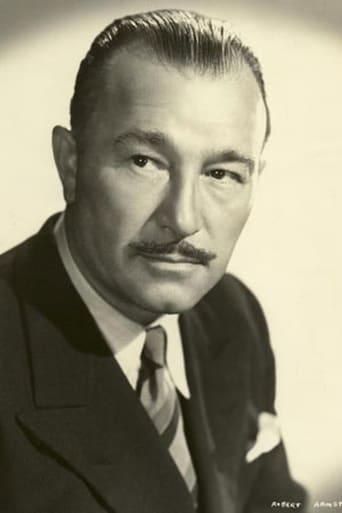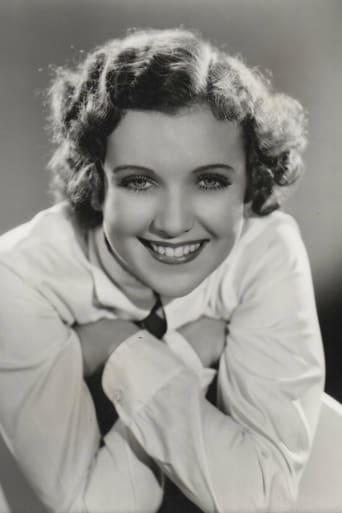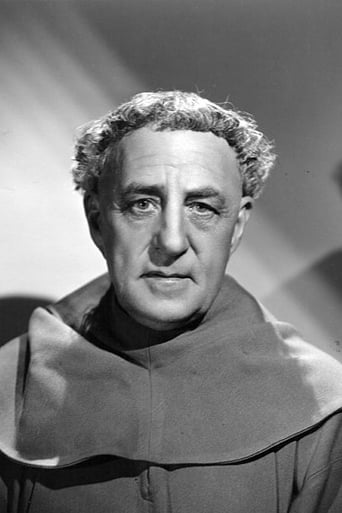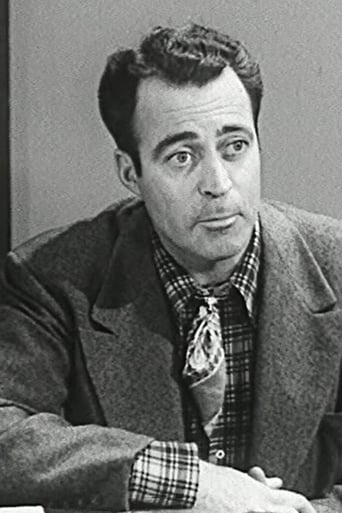Kattiera Nana
I think this is a new genre that they're all sort of working their way through it and haven't got all the kinks worked out yet but it's a genre that works for me.
Usamah Harvey
The film's masterful storytelling did its job. The message was clear. No need to overdo.
Suman Roberson
It's a movie as timely as it is provocative and amazingly, for much of its running time, it is weirdly funny.
Tobias Burrows
It's easily one of the freshest, sharpest and most enjoyable films of this year.
Paularoc
I like Monogram movies - you can generally be sure of two things - (1) the movies will be entertaining and (2) there will be either a silly plot or a plot with big enough holes in it to drive a truck through. And this movie is no exception. Robert Armstrong's Larry Doyle is a cock-sure but good reporter for a Chicago newspaper. The police respect him (indeed, they give him a gun to show their appreciation for his help with a case) but his editor can't stand him. Larry spends his $50 bonus on treating his pals to a night on the town. His editor fires him but Larry goes on celebrating and winds up in St. Louis where he befriends a down and out but spunky young woman, Anne Ogilvie (played by Maxine Doyle). One of my favorite bits in the movie is where Larry secretly pays for the Anne's coffee and donut when she finds out she doesn't have enough money. Larry sees himself as the Anne's protector and because of Larry's moxie, they end up staying in a hotel suite (with two bedrooms). In spite of his former editor's trying to prevent it, Larry eventually gets a job on the St. Louis News. He is soon hot on the trail of the notorious criminal known as "The Eel." The rest of the movie doesn't make much sense but all's well that ends well. Armstrong does a good job but does not do the snappy reporter type as well as Chester Morris or Wally Ford. However, he does such scenes as that at the coffee shop better than they so it all evens out. I had never heard of Maxine Doyle and she did a somewhat surprisingly good job as Anne. A pleasant enough way to spend an hour.
jayraskin
This really seems to be two movies in one. The first is a sweet romantic comedy that takes up the first 40 minutes of the film. Reporter Larry Doyle from Chicago gets $50 for breaking an important story and does too much celebrating. He ends up broke in St. Louis. He sits down at a lunch counter with beautiful Anne Oglivie (Maxine Doyle). She finds that she only has 10 cents to pay for her 20 cent coffee and donut. Larry secretly pays for her. Realizing that a young girl broke in the city could end up in trouble, Larry follows her around to help her out. Having no place to stay, he gets a hotel room for the two of them. Anne is reluctant, thinking he wants sex in return, but Larry reassures her that he's a square kind of guy. He orders an expensive $35 a day hotel suite which has two bedrooms with separate keys. He explains that Anne is as safe with him as she would be anywhere in the city.This part of the movie seems to inspired by Frank Capra's "It Happened One Night" which came out also in 1935. Suddenly with about 25 minutes left the movie turns into a more typical Monogram murder mystery. Larry, remembering that he's an investigative reporter, goes after a slippery gangster called "the Eel." As all Monogram murder mysteries are, its silly, cheap and quite a lot of fun.Robert Armstrong (King Kong, Son of Kong, Mighty Joe Young) gives a really strong performance. He's a sweet tough guy with a heart of gold. Maxine Doyle is excellent as the broke virgin in the city. Twenty years old at the time, this was one of her first starring movies. Over the next two years, in 1936 and 1937, she starred in about a dozen low budget movies and that was pretty much the end of her career. She did do some bit parts in the 1940's.Monogram generally made "C" or "D" movies. This one is actually a solid "B" movie.
secondtake
The Mystery Man (1935)Well this is a fast hoot, and not a good movie by any means. It has a chipper tone and some comic twists, but the acting, the acting. The core idea is good--a news reporter with a thankless editor gets caught up in a story while on leave from his Chicago paper. But the St. Louis newspaper won't believe he's a reporter, and he gets stranded and eventually accused. Luckily his buddies back home help out, and even better, a pretty girl is also stranded and helpless and good for moral support and some cleverness in the nick of time. Coulda been something.It's not like 1935 is too early for a snappy, intelligent crime detective caper film. We've already had a string of absolute classics from Warner Bros. in the early 30s, and we're seeing the beginning of the "Thin Man" series with its high level of sophistication. But this is a B-movie through and through, and I guess there is only so much talent to go around. You would do better plodding through the worst of the Mr. Moto or the Charlie Chan films than this one.
dongwangfu
This uneasy cross between a "Front Page" style newspaper yarn and a cops and robbers movie was entertaining at times but never really dramatically engaging. It was made less than a decade after the stage version, and only a few years after the Menjou/O'Brien version of Front Page. The comedic elements in the first part of the movie, as well as some funny ironic dialog come out of the interactions between news hound Larry Doyle, his editor, and his fellow reporters, come from that style of film. Halfway through, we leave that movie and enter into a crime flick, with a decent ingénue mistaken for Mrs. Doyle (played by an actress who was really named Doyle, by the way) and a case of mistaken identity leaving the reporter holding the bag. The resolution is not very clever, and the light tone of the first part of the movie means we're never really worried something bad will happen in the second. I mean, if it had been made in the 1970's, that may have happened, but in 1935, no way.There's a really neat moment at the end, though, that illustrates how in the 1930's everyone knew that newspapers could make or break elected officials, and how the publishers could influence what was published. I don't know when we lost that breezy cynicism about money and media, but I prefer it to the sacred cow of editorial independence that characterized the movies about the media I watched growing up. Doesn't really save the movie, but it is an interesting difference from things 75 years ago.




